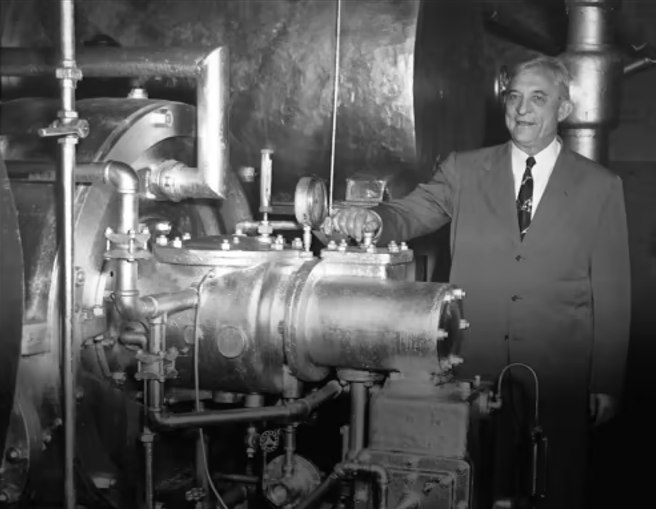THIS MONTH IN ENGINEERING | June 17, 1902 | The Birth of Modern Air Conditioning
- Rebeka Zubac

- Jun 10
- 2 min read
Updated: Jun 30
In June 1902, a 25-year-old engineer named Willis Carrier drafted a solution that quietly redefined how we interact with buildings. The issue was straightforward: excess humidity in a Brooklyn printing plant was warping paper and misaligning ink. Carrier’s response, passing air over cold coils to remove moisture, was anything but ordinary.
It marked the beginning of modern air conditioning — a mechanical system designed to manage both temperature and humidity. Submitted on June 17, 1902, Carrier’s design laid the groundwork for HVAC engineering.
At the time, controlling indoor climate was unheard of. Yet within decades, air conditioning spread across factories, department stores, hospitals, office towers, and homes. Carrier called it “rational humidity control.” Today, we call it essential infrastructure.
A major shift in high-rise cooling came with the Milam Building in San Antonio, completed in 1928. It was the first office tower to be fully air-conditioned during construction using Carrier’s centrifugal chillers. This wasn’t just about comfort. It redefined how commercial buildings were designed and valued. Once 20 percent of a city’s office towers had air conditioning, the rest followed. Some of the original chillers remained operational until 1990.
By the 1930s, Carrier’s chillers had reached Australia. In 1932, McAlpine Bakeries in Melbourne installed the first locally manufactured unit by Carrier Australia. By 1937, the City Mutual Building in Sydney was fully air-conditioned, and soon after, venues like the Scone Civic Theatre brought air conditioning to the public. Now listed on the NSW State Heritage Register, the theatre reflects the early adoption of mechanical cooling in Australian architecture.
What began as industrial humidity control quickly became a template for engineering indoor climate into civic, commercial, and public buildings.
That same thinking still shapes how we design services in high-rise buildings. From plantrooms in the basement to discharge at the roof, the sequence has evolved, but the core logic remains. Today, mechanical design spans energy modelling, NABERS, digital commissioning, and low-carbon strategies. At Goldfish & Bay, HVAC is about more than comfort. It's about compliance, system resilience, and performance that holds.
Many of today’s systems can be traced back to a single question asked in 1902.
🔗 Sources:
Willis Carrier – The Invention That Changed the World
Carrier Australia Milestones
100 Years of Centrifugal Technology (PDF)
📷 Images
Milam Building, San Antonio TX, 1928 | Willis Carrier (second from left) inspecting the first centrifugal chiller at Onondaga Pottery Company in 1950 — still running 28 years after installation. | Original patent drawing by Willis Carrier, published in 1914 | Willis Carrier at Onondaga Pottery Co., 1950

























